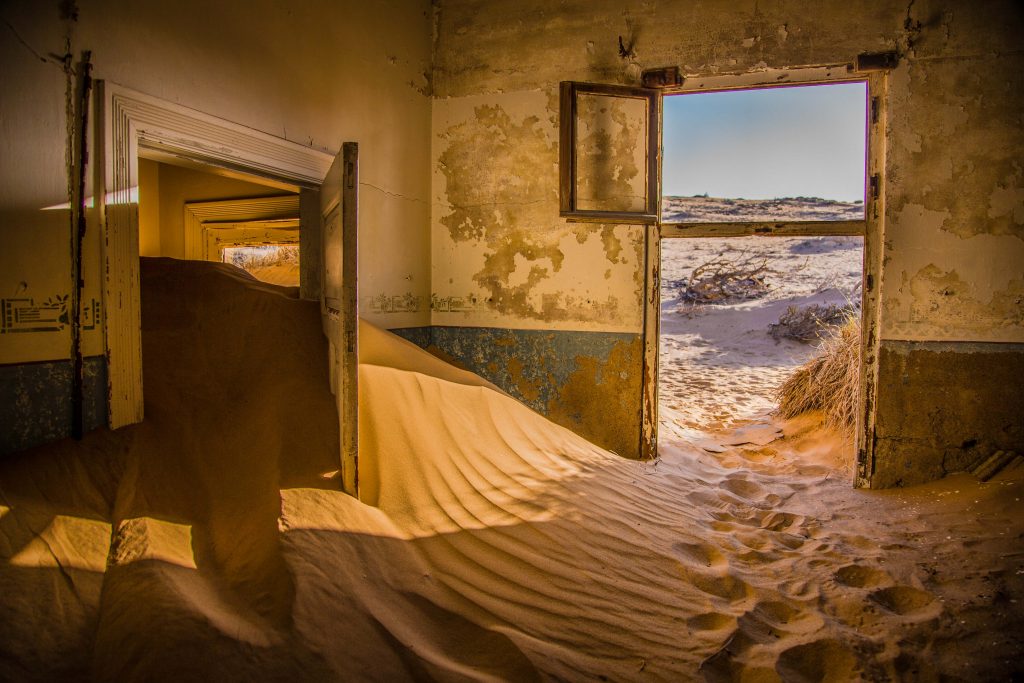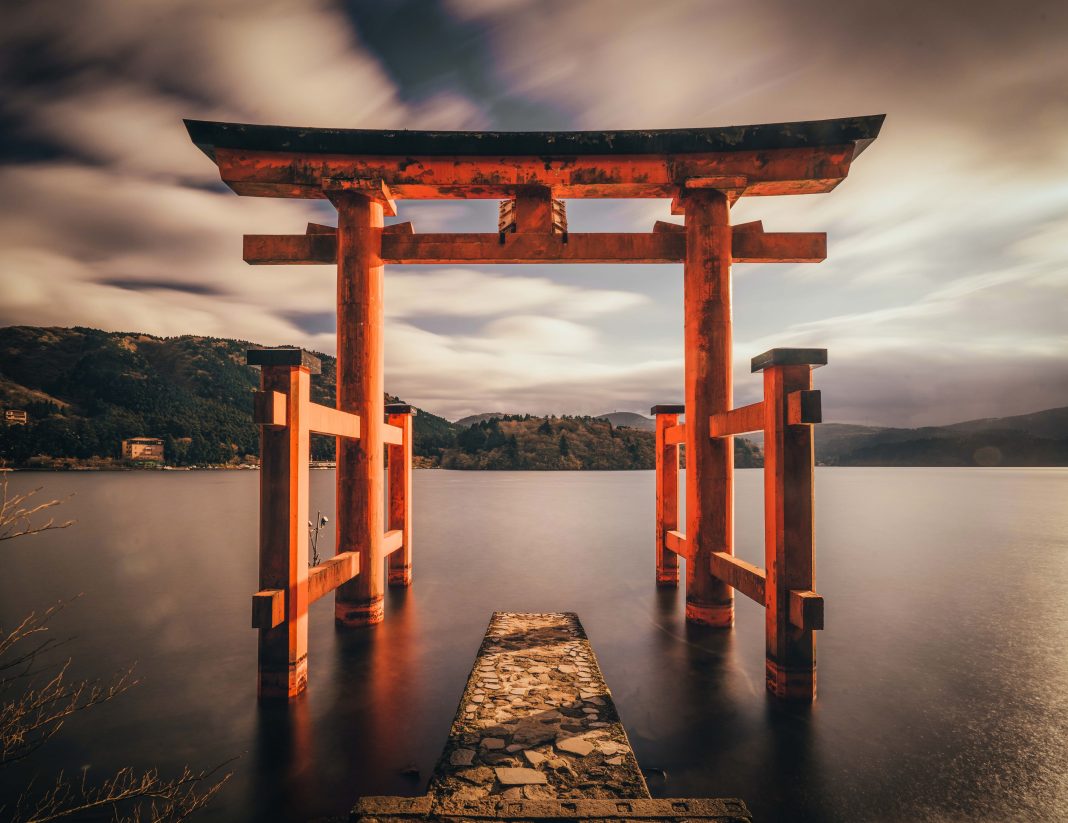Surprisingly, geography has a big part to play in the renovations we make to our built environment. Elements around the world pose different problems. While one city experiences flooding, another is dealing with desertification. Red-hot or ice-cold – wherever there are humans craving comfort, there’s a place for retrofitting. CityChangers looks at some of the regional retrofitting variations from around the world.
Deserts
Antarctica’s frozen wilderness and the scorching heat of the Sahara have one thing in common: a scarcity of water. Arid regions cover 30% of the world’s landmass[1] and are home to more than one billion people so shouldn’t be excluded from the retrofit debate. The hostile combination of fluctuating temperatures due to day-and-night differentiation signifies the need for the balanced heat levels of passive housing.
Home as an Oasis
Some regions are a step ahead – hundreds of years ahead! Traditional homes called Riads are the norm in sunny Morocco. Thick walls, no outside windows, and inner courtyards prevent heat from entering, maintaining a pleasant year-round temperature. Turning to classic construction methods could be the retrofit model needed in heating climes.
Stick It Where the Sun Does Shine
The damaging forces of sandstorms present unique quandaries to the comfort and resilience of buildings based in the desert. The UN Convention to Combat Desertification notes that sand and “dust can cause damage to lungs and worsen the symptoms of bronchitis and respiratory diseases such as asthma”. Implementing airtight structures can be a matter of life and death that European city-dwellers would never consider.

Even the energy transition is at stake: sandstorms are public enemy number one for solar power generation, blocking the light and clogging circuits. This compromises the desert’s biggest resource – the sun’s rays – and the potential for renewable power that it promises.
Keep Your Cool
Air conditioning units chew through electricity! Not ideal, but this remains a fallback for people struggling to keep cool. It’s the case from the Australian outback to the United Arab Emirates, where people leave the air-con on 24/7 because of insufferable temperatures and the long time it takes to cool a dwelling after it’s been off for a while.
HVACs pacify the heat but require quite an interior overhaul. As a simpler option, one study in Egypt found that grey-tinted glazing reduces the burden on energy use for cooling by more than 16% – essential, given that 41% of owners turn AC units on already at 26°C.
Coasts
One UK case study highlights the need to consider the local climate before embarking on a retrofit. Turns out that cavity wall insulation isn’t suited to exposed coasts where high winds soak walls with rain and sea splash. It becomes saturated and ineffectual.
Dew What’s Necessary
Rooftop dew harvesting along coastal regions of South America, such as the Atacama Desert[2] in Chile, provide residents with considerable quantities of potable water. Rooftop nets collect moisture in the form of fog rising from the ocean through the mountains. Recent developments have brought about five-fold increases in water gains. Thin plastic sheeting atop India’s urban buildings has proven similarly effective for condensing valuable water.
Irrigation Irritations
Arup’s Cities Alive[3] report warns of the impact poor water management is having on urban structures. Increased irrigation encroaching on coats is making water tables higher. In coastal areas, this leads to salination – salt getting into freshwater. Flooded basements and foundations are bad enough, but the salt causes additional damage. It also harms the vegetation we need in cities to counteract the urban heat island effect and make our environs pleasant spaces.
For more on water management, read our dedicated article.
Running Hot and Cold – Future-proofing in Colder Climates
Geology has shown itself to be a pain and a partner in our changing relationship with the world. Ice and volcanic matter are both surprisingly pertinent to our cities’ survival.
Permafrost Becomes Therma-frost
Russia can get so cold that graves are impossible to dig and toilets cannot be indoors because plumbing ices up. Yet, as the world warms, Russia’s permafrost melts. We might be excited by the resurfacing of long-hidden woolly mammoths, but not so with homes slumping beneath our feet. Foundations are undermined, walls crack and collapse, and eventually, the building is condemned and demolished. Structures built to withstand the alternations in ground morphology cost up to 40% more to construct.
Are there other answers? The method used in Siberia in the 1960s, resting buildings on concrete ‘stilts’ above the ground, helps cool the soil. This could be employed elsewhere. However, the rate of warming in Siberia is so sharp it counteracts the cooling effect. Alaska has a modern solution in the form of Thermosyphons. Pipes injected into the ground draw heat up and out, keeping the cool where it’s needed. This can be used to ensure the stability of frozen ground and the buildings placed above it.
Hot as Ice
Geothermals: in Iceland, these manifest as gushing geysers, but the real spectacle is deep underground. Water naturally heated by magma deep below the surface provides almost all hot water, electricity, and heating for the island population. This natural phenomenon makes energy so cheap, though, that the Icelanders don’t think twice about jacking up the thermostat and propping open the windows simultaneously: behaviour known as the direct rebound effect. Not exactly efficient.
In terms of an infrastructure overhaul, the USA for one is looking towards Iceland to learn how to revolutionise its energy production. Frances Ball from Launch Alaska is advocating to “use geothermal for direct heating and other non-electricity uses such as geothermal greenhouses”. Administrations willing to absorb the costs – as Iceland did in decades past – will pass on financial and carbon savings for generations to come.
Natural Disasters
America’s National Association of Home Builders (NAHB) claims that retrofitting existing properties can “improve their resistance to blizzards, earthquakes, floods, hurricanes, and wildfires” to an extent that “exceed that of increasing code requirements for newer homes”. Threats vary, but our building stock needn’t be left helpless.
Wild Winds
The NAHB offers some helpful factsheets with advice for preventing wind and water damage caused by hurricanes. They prescribe (re)fitting:
- Asphalt shingles – secured and layered ‘tiling’ strips that aid runoff.
- A sealed roof deck – an underlay of waterproof felt for extra peace of mind.
- Storm shutters – to save windows from airborne debris outside (bins, furniture, even trees!) and wind pressure inside.
- Impact-resistant doors – more protection from whatever the hurricane might pick up and throw about.
Boom, Boom, Shake the Room
Earthquakes are a genuine threat. From China to New Zealand, and from the Ring of Fire to the western American seaboard, the wider pacific region is especially vulnerable to tectonic devastation.
Damage is felt in terms of lives lost, the cost to rebuild, and diminished income. Destruction of heritage buildings has irreversible cultural repercussions. Displaced residents need rehoming. Services and public buildings that temporarily cannot function hamper emergency operations and post-quake regeneration.
Informal settlements are home to 200 million people in Latin America and the Caribbean. They are highly susceptible to destruction in natural disasters. The World Bank argues for retrofitting such neighbourhoods before the next high-magnitude disaster hits.
Even in well-coordinated cities with formal structures, it can take up to 10 days to reconnect electric supply, 10 weeks for water, and 84 days for gas. That’s hellish for citizens and can create a hotbed for disease.
Seismic retrofitting is about preparing stock to withstand a shunting, increasing resilience, and aiming to “enable owners to resume business operations and provide liveable conditions quickly after an earthquake”.[4] The Orizuru Tower in Hiroshima, Japan, is one of many examples of how reinforced crosshatch framing is being added to historic shells to protect them for prosperity. In Portland, USA, after decades of debate, regulations have been drawn up for mandatory retrofitting for unreinforced masonry (URM) buildings if certain triggers are met. While, in an unusual move, Taipei 101 in Taiwan, formally the tallest building in the world, exposes its dampers; a counteractive weight that protects skyscrapers in both earthquakes and typhoons – see videos of it in action here.

Rise and Shrine
The history of Japan’s Itsukushima Shrine is as much a roll call of natural disasters as a tale of resilience. In 1946, for example, it withstood being partially buried by 15,000 m3 of sand and soil – the result of an avalanche triggered by a typhoon!
Some parts of the shrine date back to the 12th century. Its longevity, despite such a lashing, is down to some ingenuity. Built on stilts in the sea, it is prone to flooding but corridors are raised; floorboards are spaced slightly apart and can be easily removed to aid drainage and ease the damaging pressure of rising tides.
According to The Japanese Association for Conservation of Architectural Monuments, approximately 90% of Japan’s heritage buildings are wood constructions, which makes them susceptible to the country’s high levels of humidity and rainfall. The country has a tradition of maintaining and repairing significant buildings; in modern times, they seek to incorporate original and “compatible” new materials, treatments, and building techniques to retain the cultural significance and better withstand the elements. “A structural analysis to evaluate the seismic performance of the building is also carried out in order to determine the need for reinforcement.” In some regions, it seems a mix of old and new building techniques offers the best protection for the future.

Regional Retrofitting in a Nutshell
Rigid in design but flimsy in structure, to buildings our planet can be a hostile place. Earth, wind, water, and fire can signal catastrophe for the unprepared property – and us! As we move to live in harmony with nature, we learn how to endure its most tempestuous treatment. Understanding the climate, topography, hydrology, and geology of the region is essential to getting a retrofit right. So, whether the threat is northern Europe’s wet weather or a Pacific ground-shaking, we now know that our lives, infrastructure, and comfort can be preserved.
[1] [2] [3] Cindrić, H. (2018). Cities Alive: Rethinking Cities in Arid Environments. Arup. https://www.arup.com/perspectives/publications/research/section/cities-alive-cities-in-arid-environments
[4] Almufti, Ibrahim & Willford, Michael (2013). REDi™ Rating System: Resilience-based Earthquake Design Initiative for the Next Generation of Buildings. https://www.researchgate.net/publication/326331951_REDi_Rating_System_Resilience-based_Earthquake_Design_Initiative_for_the_Next_Generation_of_Buildings


